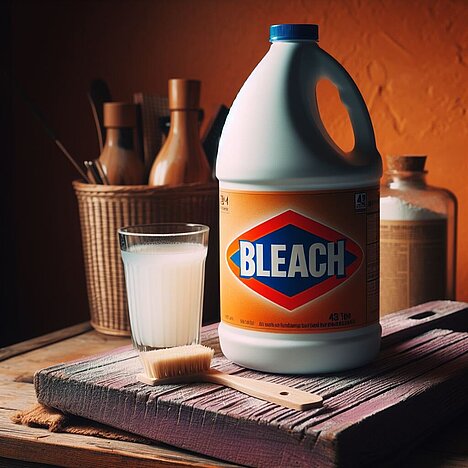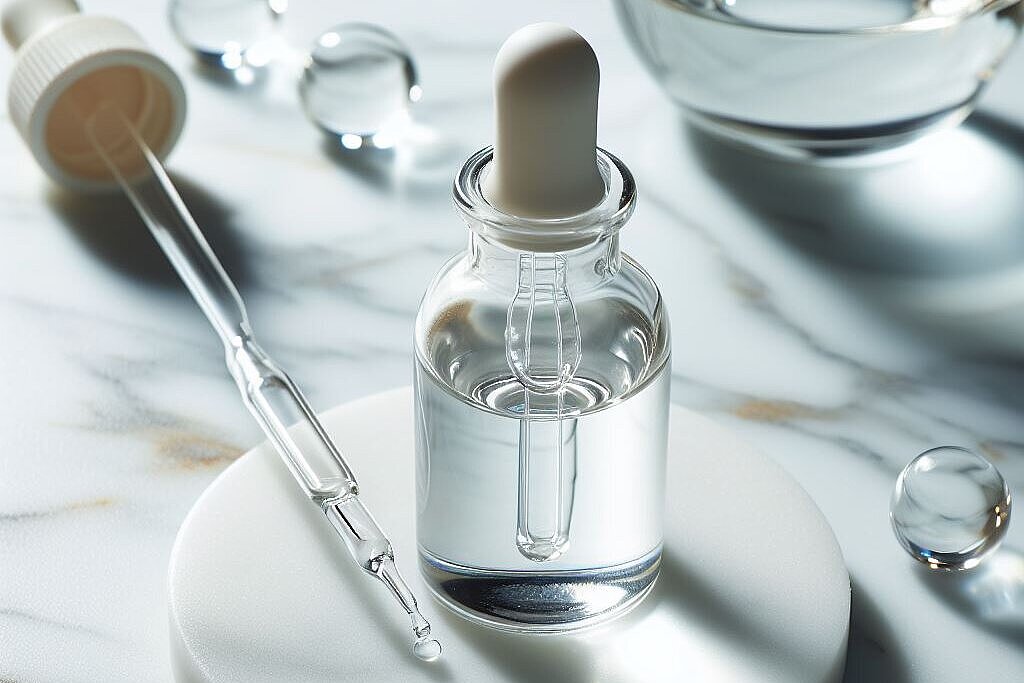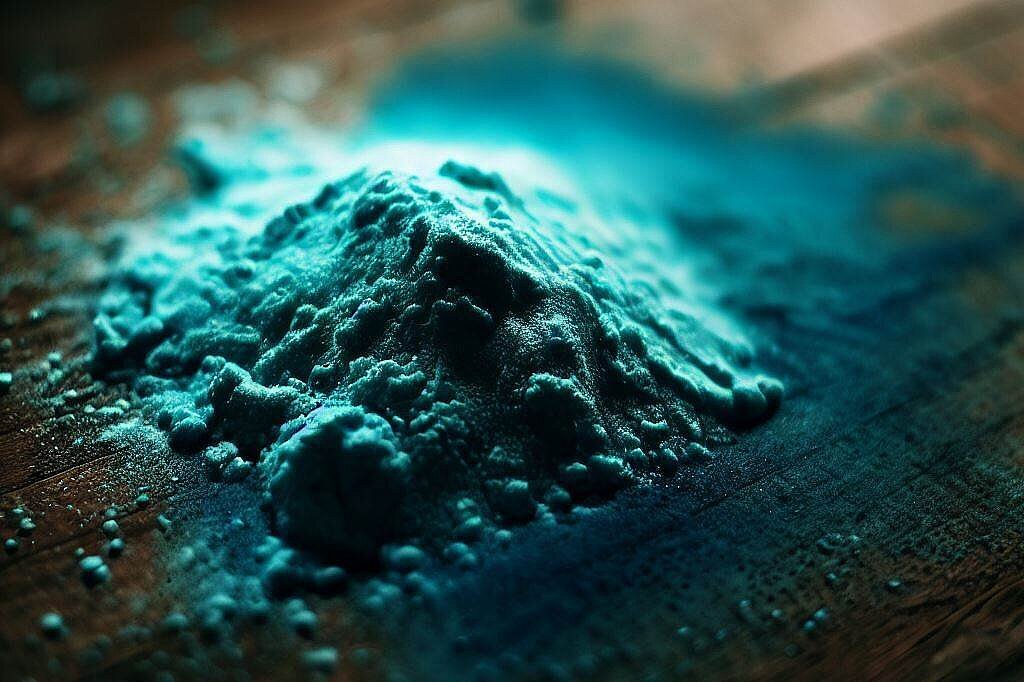Bleaching agent

What is a bleaching agent?
Bleaching agent is a collective term for various substances that remove unwanted color from raw materials in the paper and textile industry or discoloration caused by aging or light yellowing. In addition to the bleaching process, the bleaching agent is also sometimes referred to as "bleach".
There are two main groups of bleaching agents: oxidative and reductive bleaching agents. Oxidative bleaching agents contain oxygen or other elements that remove electrons from the dye molecules and thus destroy or change them. Reductive bleaching agents contain sulphur or other elements that transfer electrons to the dye molecules and thus reduce or change them.
The best-known oxidative bleaching agents include hydrogen peroxide, chlorine compounds such as sodium hypochlorite (also known as DanKlorix or Javel water) and ozone. The best-known reductive bleaching agents include sulphur dioxide, sodium dithionite (also known as hydrosulphite) and sodium borohydride.
How to use bleach correctly?
Bleach should always be used with caution and in accordance with the safety instructions. As bleach is highly toxic if swallowed or inhaled, it should never get into the hands of children! In addition, protective gloves and goggles should always be worn to avoid skin and eye irritation.
Bleach should always be diluted and never mixed with other cleaning agents, as this can lead to dangerous chemical reactions. For example, mixing chlorine bleach with vinegar or ammonia can lead to toxic chlorine or chlorine gases.
Bleach should always be tested on a small area before using it on larger areas to avoid unwanted discoloration or damage. For example, chlorine bleach can lighten white textiles, but fade or even bleach holes in colored textiles.
Bleach should always be rinsed thoroughly with water after use to remove residues and stop the bleaching effect. For example, hydrogen peroxide can cause discoloration or corrosion if it comes into prolonged contact with wood or metal.
Why is bleach dangerous for dogs?
Bleach is dangerous for dogs because it can damage their mucous membranes, skin and internal organs. If your dog accidentally ingests bleach, it can cause severe symptoms of poisoning, such as vomiting, diarrhea, respiratory distress, seizures or unconsciousness. If your dog accidentally gets bleach on its paws or coat, it can cause skin irritation, hair loss or burns.
Bleach is particularly dangerous for dogs because they have a more sensitive sense of smell than humans and can therefore be more attracted to the fumes or smell of bleach. In addition, they cannot read what is written on the labels of the bleach and therefore do not know that it is a toxic product.
What can you do if your dog accidentally ingests bleach?
If your dog accidentally ingests bleach, you should see or call a veterinarian immediately. Do not try to induce vomiting or give your dog milk or water as this can make the situation worse. Keep the packaging of the bleach to show the vet what type of bleach it is and how much your dog has ingested.
If your dog accidentally gets bleach on his paws or coat, you should immediately rinse him with plenty of lukewarm water to remove the bleach. Avoid using soap or shampoo as this can increase skin irritation. Dry your dog carefully and watch him for signs of skin lesions or discomfort.
Bleach is a useful cleaning agent, but it also carries many risks. Bleach is particularly dangerous for dogs because it can seriously damage their health. Therefore, you should always make sure that your dog does not have access to bleach and that you use it safely and correctly. If your dog does come into contact with bleach, you should act quickly and seek veterinary advice.
Properties 8
Are you looking for other ingredients with a specific property?
Just click on them to find more.
If you notice any signs of hypersensitivity or poisoning in your dog, you should see your vet immediately. We are not a substitute for a vet, but we try to be as accurate as possible. Every dog reacts differently and we recommend you get a second opinion or consult your vet if in doubt.
Stay healthy and take good care of your four-legged friend!😊
Similar to Bleaching agent
Hydrogen peroxide is a pale blue liquid that is colorless in diluted form and soluble in water and organic solvents. It is known for its oxidizing properties, which make it an effective disinfectant...
Sodiumhypochlorite (NaClO) is a chemical compound of sodium, oxygen and chlorine. It is formed when chlorine is introduced into a sodium hydroxide solution. The resulting liquid, often referred to...
Chlorine can have some benefits for dogs when it is present or applied in small amounts. For example Chlorine can help clean and disinfect wounds. If your dog has injured himself, you can dab some...
Sodium perborate is a chemical compound that serves as a source of active oxygen and is therefore often used as a bleaching agent and disinfectant in detergents, cleaning products and some dental...



